Go Inside the Smithsonian’s ‘First Ladies’ Gallery
Take a tour through American fashion history with Curator Lisa Kathleen Graddy.
The day before Dr. Jill Biden presented her inaugural attire to the Smithsonian’s permanent collection, I made my way to the National Museum of American History to visit its beloved “The First Ladies” exhibition. Anticipation was high! A glass box stood empty in the center of the display with a large sign announcing the imminent arrival of Biden’s ensembles. (You can read about that incredible day here.)
I had the best possible guide to get a fuller understanding of this major moment in first lady fashion: Curator Lisa Kathleen Graddy. She generously walked me through every aspect of the current display, which includes a series of dresses, an array of official White House china, and a host of personal effects.
Below you’ll find the parts of our conversation that focused on fashion. When I tell you I loved this SMT journey through history! It was fascinating to hear Graddy talk about the importance and evolution of first lady clothing, as well as how each woman approached the job. We covered everything from from Lucy Hayes’s restrictive reception dress in 1880 to Rosalynn Carter’s repeat inaugural gown nearly a century later. It was fascinating to learn why Frances Cleveland stopped wearing bustles and how Jacqueline Kennedy eased into strapless dresses with one-shoulder styles. My favorite tidbit might be Barbara Bush’s frugal choice of inaugural footwear. Read on for so much more. (Note: Our conversation has been edited and condensed for length and clarity.)
The photos below are by Jarrard Cole, who came with me to document this trip. Thank you, Jarrard!
How did the exhibition begin?
Lisa Kathleen Graddy: This is, by my count, about the 10th version of the exhibit to exist in a hundred years. It went on display the first time in 1914. The collection began in 1912 by two volunteer woman curators, Cassie Mason Myers Julian-James — she had a couple of husbands — and Rose Gouverneur Hoes, who happened to be a descendant of President James Monroe.
Originally, Mrs. Julian-James was envisioning an exhibition of American costume. But a hook was born once she joined with Mrs. Hoes because Mrs. Hoes had access to clothing worn by Elizabeth Monroe and her daughter, Maria Gouverneur, who acted as the first lady sometimes when her mother was in ill health. They decided they would put in some specialty cases highlighting the dresses of the mistresses of the White House.
Mistresses of the White House!
Which you’d never say now!
Interestingly, it’s the first exhibition in the Smithsonian by, for, and about women. Mrs. Hoes and Mrs. Julian-James were trying to get a dress to represent each presidential administration.
They created what I’d like to think of as the Smithsonian definition of first lady, which is not about your marital status. It’s about who’s doing the job. Mostly that’s the spouse, but sometimes it’s a daughter, a daughter-in-law, a niece, a sister, a family friend.
And what was the job, particularly back then?
It’s the person who’s fulfilling the function of hostess. You could not entertain in mixed company without a hostess at your table. If you want to entertain Congress and have their wives, if you were doing diplomatic entertaining and the ambassador’s wife is here, you had to have a hostess. So this is not a frivolous job. It’s a necessary job. And it is the oldest, longest lasting job of the first lady.
What was the goal of today’s iteration of the exhibition?
The first lady is an important but completely unofficial job. There is no job description for first lady. It’s not in the Constitution. So each first lady creates the job anew for herself based on her own personal interests and preferences, the particular needs of the presidential administration for what they need her to do, and the expectations of the American public.
The orientation of the exhibit is really to look at how different women approached this job. What do they craft for themselves? How do they create examples for others and look back at examples for themselves?
And what role do the clothes have in this?
Costumes are how we see people. They’re not frivolous. They’re the uniforms we wear to do our jobs. Sometimes your job is at a reception. Sometimes it’s the suit you wear to become speaker of the house.
And so we started by saying: Why do we care what the first lady wears? Because the initial impulse is to say that’s a very 20th or 21st century thing, a very red carpet idea — Who are you wearing? — but it isn’t. We’ve been criticizing or complimenting or commenting on the first ladies’ clothes since Martha Washington.
We wanted to look a little at the first ladies who have used clothing in some way, shape, or form, or we have made a big impact on clothing.
Why do you think we care so much about what first ladies wear?
We all know clothing is the first thing you see about anyone. You see their outward appearance. What do they look like? What is this saying about how I see myself or how I’m presenting myself? It’s what you’re crafting. And especially for people most of us will never meet, it’s the only thing we get to see. So of course, that’s how we start to begin to assess someone.
I think even more so with first ladies, they belong to us. They are representing us out in the world. We feel that we have a right to say: Are they doing the job right?
“Topping the best-dressed lists, Jacqueline Kennedy was a fashion icon. The ‘Jackie look,’ copies of the clothes designed for her by Oleg Cassini, sold in stores across America on mannequins that resembled her.” — The Smithsonian National Museum of American History
Has what first ladies wear always been the subject of debate?
There have always been controversies about it. [Designer] Oleg Cassini tells a story about Jack Kennedy being concerned about whether Jacqueline could wear strapless dresses. He didn’t know if the public was ready for that. And Cassini talks about how the inaugural gown [he designed] is obviously a strapless dress with a sleeveless overlay — best of both worlds.
Then they moved to one shoulder dresses. That yellow dress is her first state dinner gown [above]. Very Cassini. And then they moved to strapless dresses and it turned out the public liked Mrs. Kennedy’s shoulders just fine.
I’m struck by the mix in this first large display case.
One of the things I like about this exhibit is that we’ve taken the dresses out of chronological order. Partly, it enables us to use the space better. And I think that you see the differences in dresses more when you’re not seeing the slow progression. You really see how clothing has changed, the impact of how you can move and dress, the way their lives are changing, and their roles were changing.
“Lucy Hayes had a distinct and unfaltering personal style. While following current fashion, she favored modest clothing that covered her throat and arms. She received both praise and criticism for her restrained wardrobe.” — The Smithsonian National Museum of American History
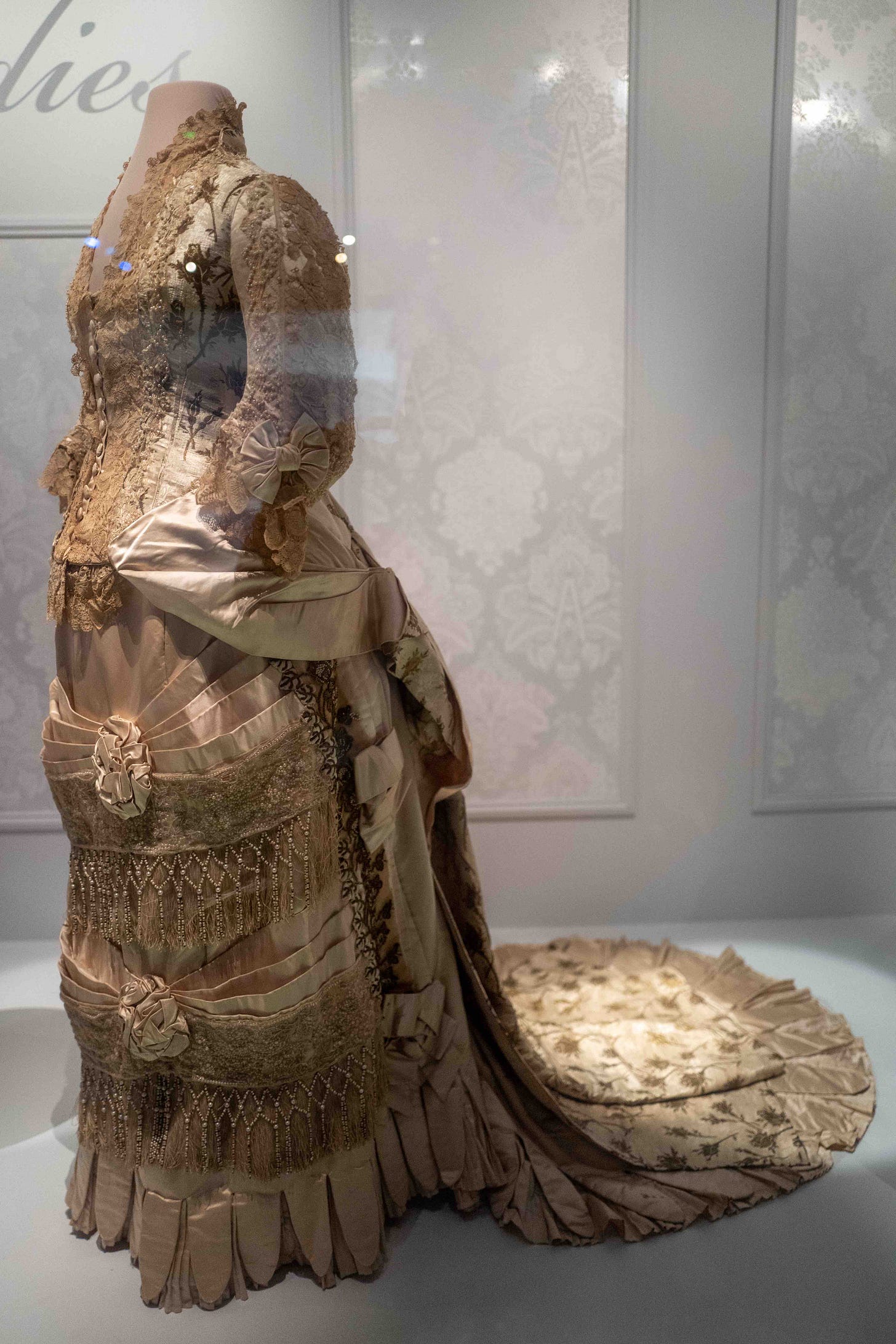
This dress [above] is Lucy Hayes’s reception dress. If you look at the back, that is tight across your shoulders, you are not going to be able to lift your arms much more than this [gestures to waist level]. Well, that is a reception dress. You wear it to hold flowers, shake hands, and say hello. I mean, this is the everything-but-the-kitchen-sink dress. It has got beading, it’s got lace, it’s got embroidery, it’s got a bow. It’s got everything. But you’re not going to move a lot in it.
Now look at the one next to it [below], Edith Wilson’s dress. We sometimes call this our Downton Abbey dress. You can see this difference in how you move and in how people use clothing [in just a few decades].
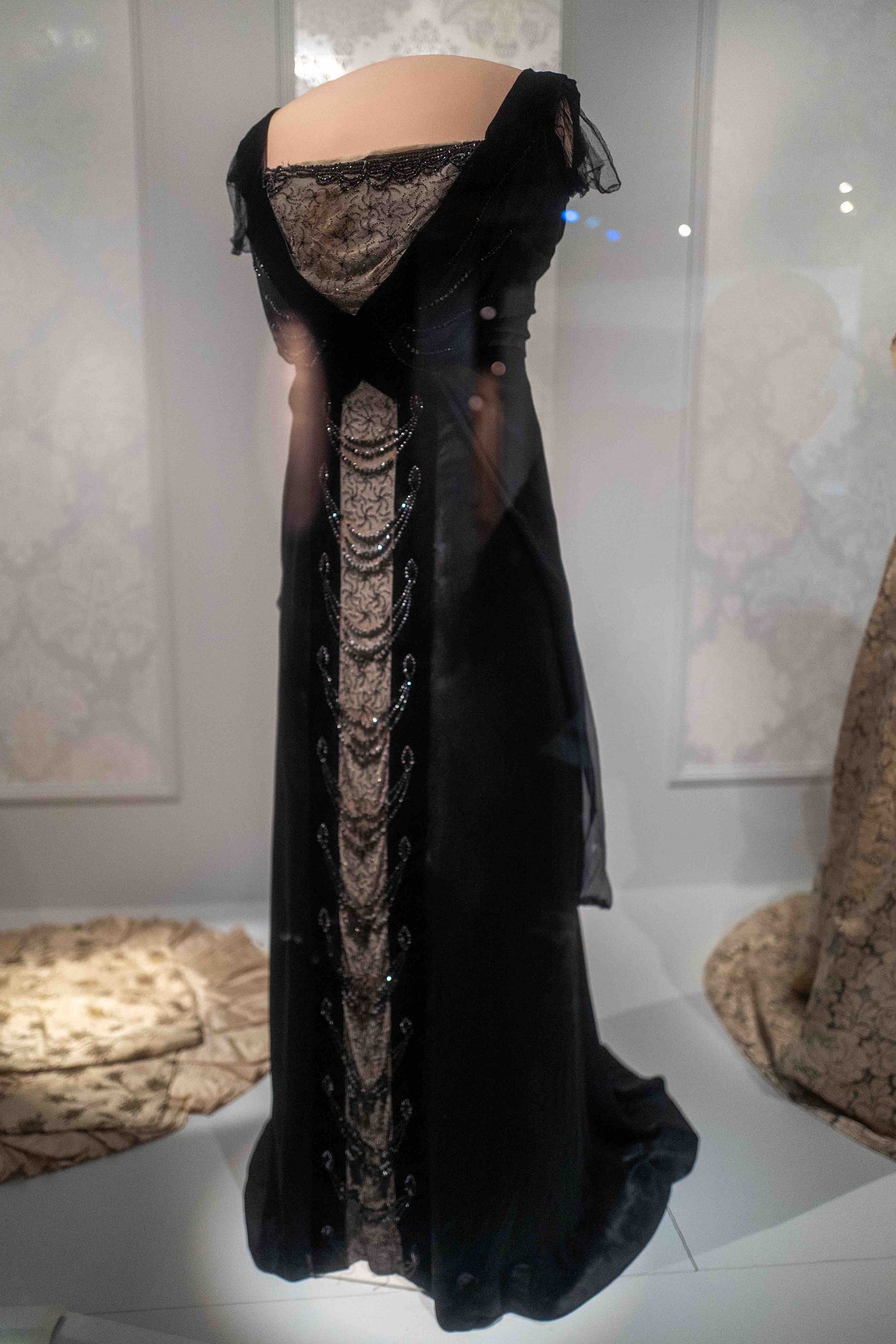
“A well-dressed woman, Edith Wilson gave careful thought to the clothes she purchased. Her fashionable wardrobe included gowns from the House of Worth in Paris. Newspapers reported the first lady’s preference for black dresses and simple lines.” — The Smithsonian National Museum of American History
What about that three-piece look in the back?
This is Frances Cleveland, who’s paired here with Jacqueline Kennedy, because she is sort of the Jacqueline Kennedy of the 19th century. Frances marries Grover Cleveland at age 21 in a White House wedding that people were desperate to see but was in secret. The public became obsessed with her: What is she doing? How is she doing things? They copied her hair, they copied her clothes.
Her influence was so great that there’s an apocryphal story of two bored reporters in Washington one summer. They needed to file a story. They didn’t have anything. Nothing was going on. [They thought:] Mrs. Cleveland always makes good copy. Let’s come up with something about Mrs. Cleveland. What if we say that Mrs. Cleveland has decided to stop wearing bustles? So they published this story. Mrs. Cleveland has never heard any of this. People stopped wearing bustles. Mrs. Cleveland, who had no intention of stopping wearing bustles, eventually has to because they start going out of fashion.
“No other first lady had been a celebrity before Frances Clara Folsom Cleveland. The media coverage of her White House wedding to President Grover Cleveland excited the romantic sentiments of many Americans. Almost overnight, the twenty-one-year old bride became an icon. Her clothing choices were copied, and her likeness was used without permission or compensation in innumerable advertisements.” — The Smithsonian National Portrait Gallery
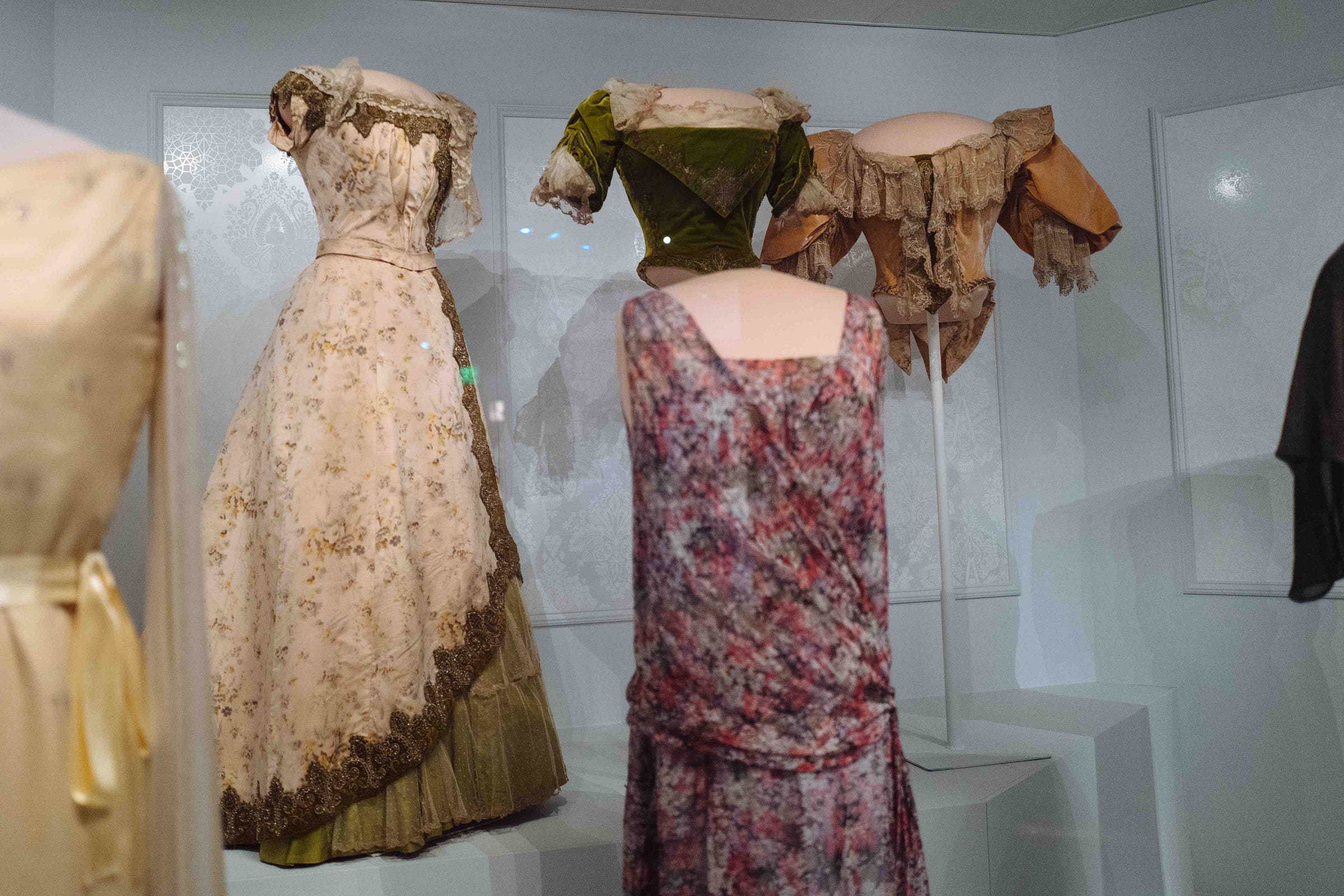
This trio is a floral skirt that she got in Paris on her honeymoon with the original peach bodice. When she came back to DC, they took some length out of the skirt and had a second bodice made. And then from a dressmaker in Baltimore had this green velvet bodice made. So you can have three outfits with this one skirt.
Also, it was a tradition for the first lady to have a weekly tea. Certain members of the public could come — if they were appropriately dressed — and have tea. Mrs. Cleveland moved some of these teas to Saturdays so that women who were working could come.
What about the floral dress in front?
One of the things we have done in this exhibit is also try to use daywear as well. This is Lou Hoover’s [above center], who was first lady at the start of the Depression. That’s a garden party or a tea dress.
Lou Hoover is not someone we associate with high fashion, but she always made the best dressed list in Washington. She is actually the first first lady to appear in Vogue. One of the things Lou Hoover tried to do was start a trend for cotton evening gowns, hoping that she could promote the cotton industry in the south. Didn’t catch on.
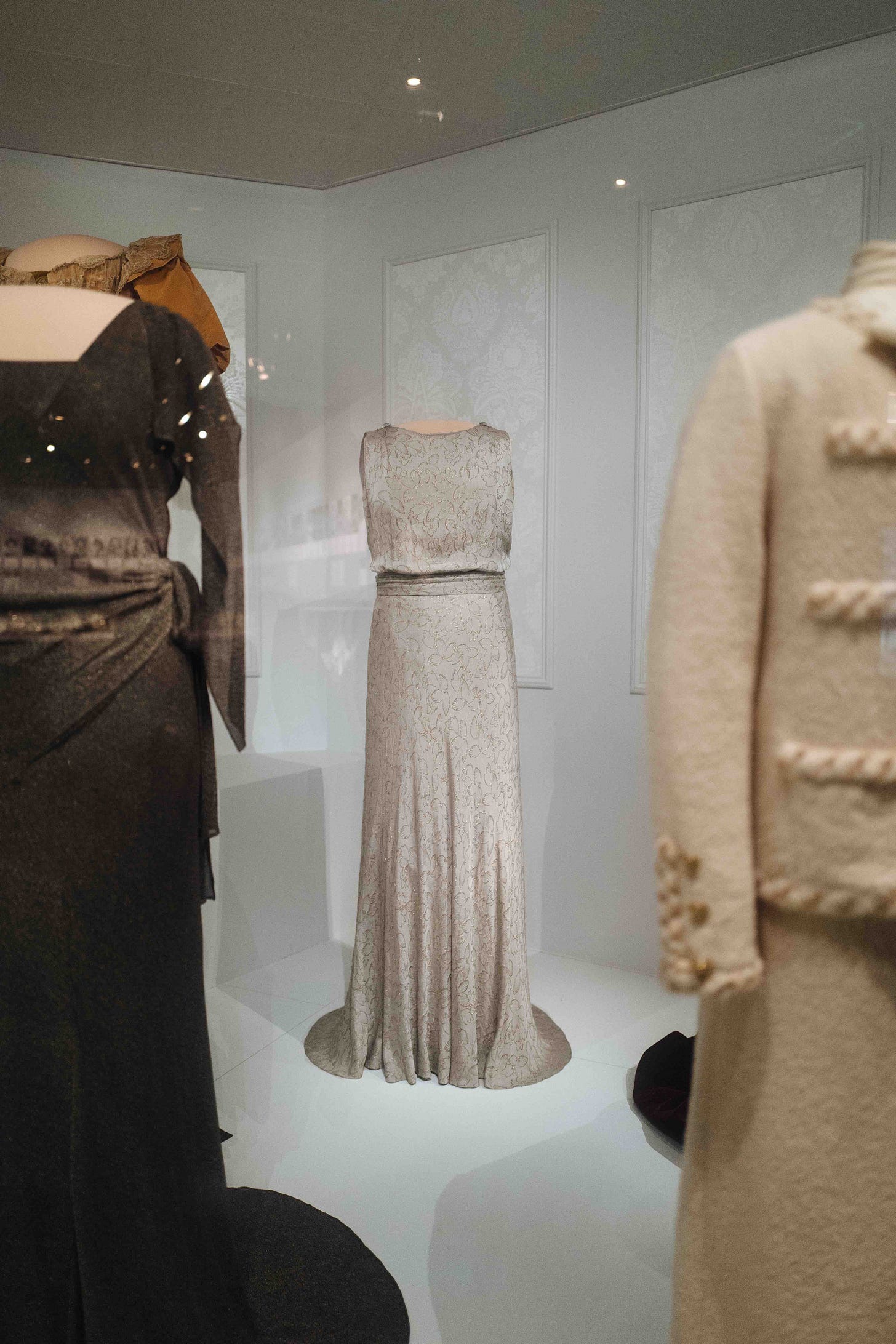
“A frequent traveler, Eleanor Roosevelt preferred simple outfits that could be worn with a variety of blouses and accessories. Understanding that ‘busy people like to buy their clothing ready made,’ the first lady promoted ready-to-wear clothing but cautioned against buying goods made in sweatshops.” — The Smithsonian National Museum of American History
And the silver sparkly one back there?
This is Eleanor Roosevelt’s 1933 inaugural gown [above center]. Eleanor Roosevelt is also not someone, in your head, who is synonymous with slinky clothing or fashionable clothing. But she had lovely clothes. One of the things I love about this dress is it’s convertible. She wore it this way for the inaugural ball, so we kept it sleeveless. It has detachable sleeves that attach with these little moonstone clips, very full and with a tight cuff. And then the back, if you open the back, you can make it a low draped neckline — so also a dress that you can get multiple uses out of.
[After an insightful chat about White House china — perhaps fodder for another newsletter! — we made our way to the second large display of dresses.]
This is the section with the most recent inaugural gowns. The inaugural ball is the moment, generally, when the first lady first steps out as the first lady so we call it a “first lady’s debut.” We took this section to look at the dresses, obviously, but also to talk about what is it that the first lady has planned out to do?
So you look at somebody like Rosalynn Carter, who was totally befuddled by the inaugural gown. She did not realize that people were going to care what she wore. She did not realize that part of her job might be to promote American fashion. She was focusing on: If I just do a good job, isn’t that what’s required of me? [President Jimmy Carter] was like, “Well, no, the role is a little larger than you thought.”
This dress is actually a sentimental choice. She got some flack for this dress. This is what she wore for Jimmy Carter’s gubernatorial inauguration ball.
“[Rosalynn] Carter’s style is conservative: She likes covered up designs with raised necklines and long sleeves. Her clothes aren’t particularly youthful but they don’t age her either. They reveal her as she is. They are pretty and neat, comfortable and appropriate and always American made.” — The Washington Post, 1977
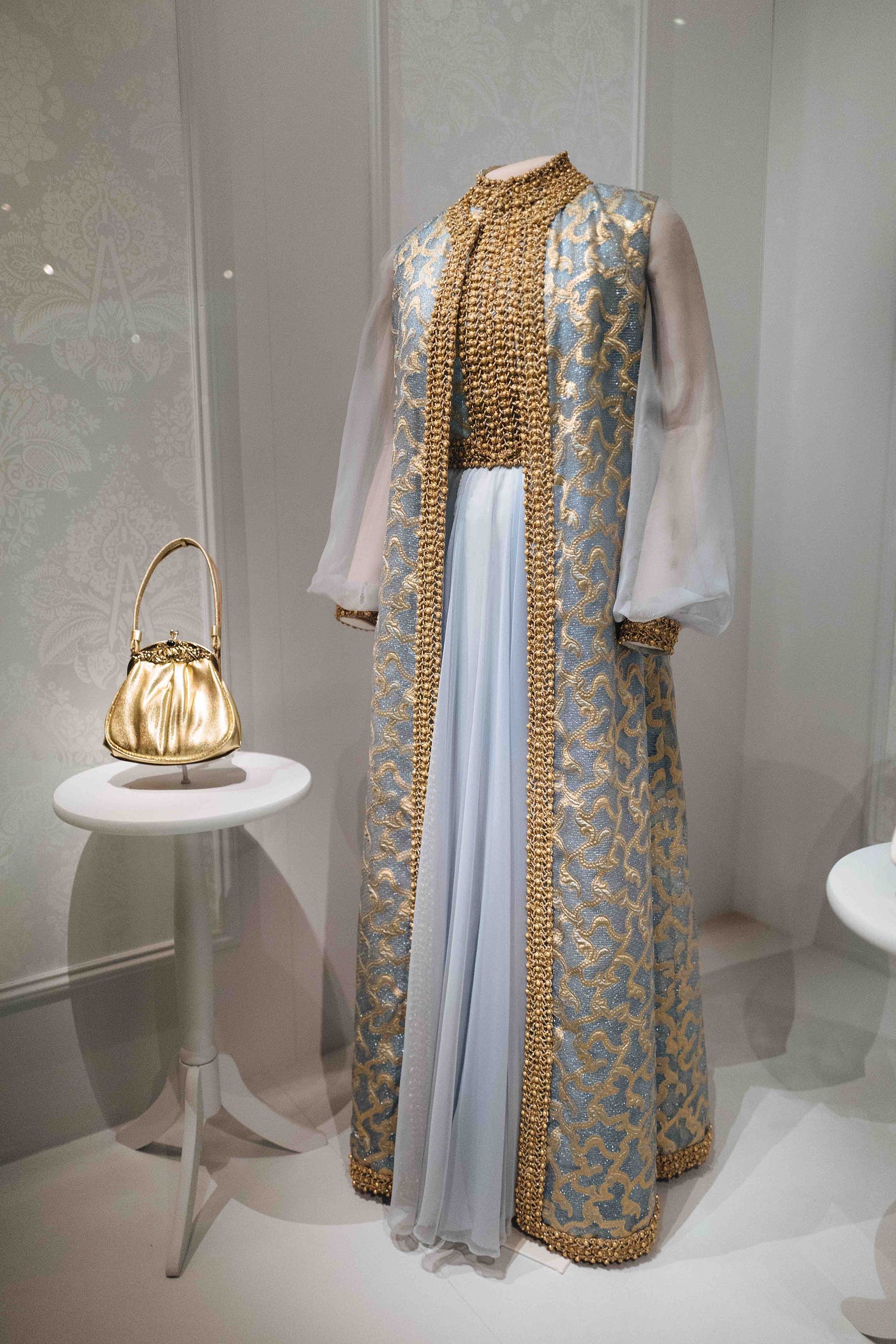
She re-wore it!
Yes. She also wore it once for a dinner at the White House when he was governor. And so she decided that if they were elected, she was going to wear it because it was a sentimental choice for her. Which is not necessarily what the public is expecting.
She was unprepared for this idea that [fashion] was going to be part of her job because she intended to be a social advocate. She attended cabinet meetings, not as a participant, but to hear so that she would be able to discuss things with her husband. And she traveled as his representative on a swing through Latin America, meeting with Latin American leaders.
This is where [a first lady] walks that line: Who elected you? I like you. I think you’re smart. But where is that line? And that line moves is the problem. That line moves.
“Nancy Reagan’s designer wardrobe brought a touch of old Hollywood to the White House and popularized ‘Reagan red.’ To assist in planning her public appearances, Mrs. Reagan’s clothes were tagged to record the events to which she had worn them.” — The Smithsonian National Museum of American History
And Nancy Reagan?
This is also interestingly, I think, a sentimental choice. It was a new dress, [by designer James] Galanos. I don’t know how she sat down in it because it’s beaded all the way around. But when Ronald Reagan became governor of California, for that ball, she wore a [Galanos-designed] one-shouldered white dress. And so she created another one-shouldered white dress.
And then this very 80s style worn by Barbara Bush.
This is by Arnold Scaasi. I mean, those sleeves — this is just an eighties dress. I like it, actually. It’s of its time. And it’s extremely appropriate. She looks good in that dress, she looks dignified and it looks good with those pearls. But it was not designed especially for her. It was part of his line. She had bought it as part of her wardrobe. A couple other women in Washington had it. In his autobiography, Scaasi talks about having to contact those women and make sure that they were not wearing it to the inauguration.
Barbara also didn’t think it was worth it to buy new shoes for one night so she bought cheap shoes. Because it’s one night. Her advice [to future first ladies] was: Don’t do that. Get good shoes ’cause your feet hurt by the end of the night.
“Clothes aren’t what the new first lady is all about, even if hers will someday end up in the Smithsonian. [Barbara Bush’s] style is Yankee no-nonsense. She’s a woman who doesn’t need to wear frills or makeup to look elegant, and she knows this.” — The Washington Post, 1989
And onto Hillary Clinton.
I didn’t realize this until I started cataloging but it was designed by an Arkansas designer [Sarah Phillips]. But it was created, made, by a firm that did Broadway costumes [Barbara Matera Ltd]. What’s interesting is around that hem, it’s got a wire so that it’ll move out when you do, which I think is very clever — also that overskirt is removable.
[We then turned to the trio of oval-shaped video screens in this display, which play, among other things, a series of clips from the inaugural balls.]
In the version of the exhibit we did before this, which was in a temporary space, we experimented with the big blow-up photos. Then with our partners at the History Channel, we captured the dresses in high definition. We took the dresses out of the case, put it on what was essentially a turntable, a big lazy Susan, so you can see high-definition photography of the dress. We then put them together with video clips from the inauguration to give an idea of what the dress looked like in motion. Because that’s what the public looks for at night — you’re looking at them dancing and wondering how they’re moving in it.
Is that what you’re thinking when you watch?
In my head, in about 10 minutes, this is my dress. [Laughs] Okay, don’t spill anything on my dress. Don’t step on my hem. Is it going to fit in the case? Are we going to be fine? How hard is it going to be to mount? These are the things that start running through our heads.
Also, all of the sudden, we’ve got white dresses [Michelle Obama, Melania Trump] and Dr. Biden’s will be white. So I keep thinking, I need to send a note to whoever’s next and say, could you do me a favor? I need a color. Green, nobody’s done green for a while. Maybe think green. [Laughs]
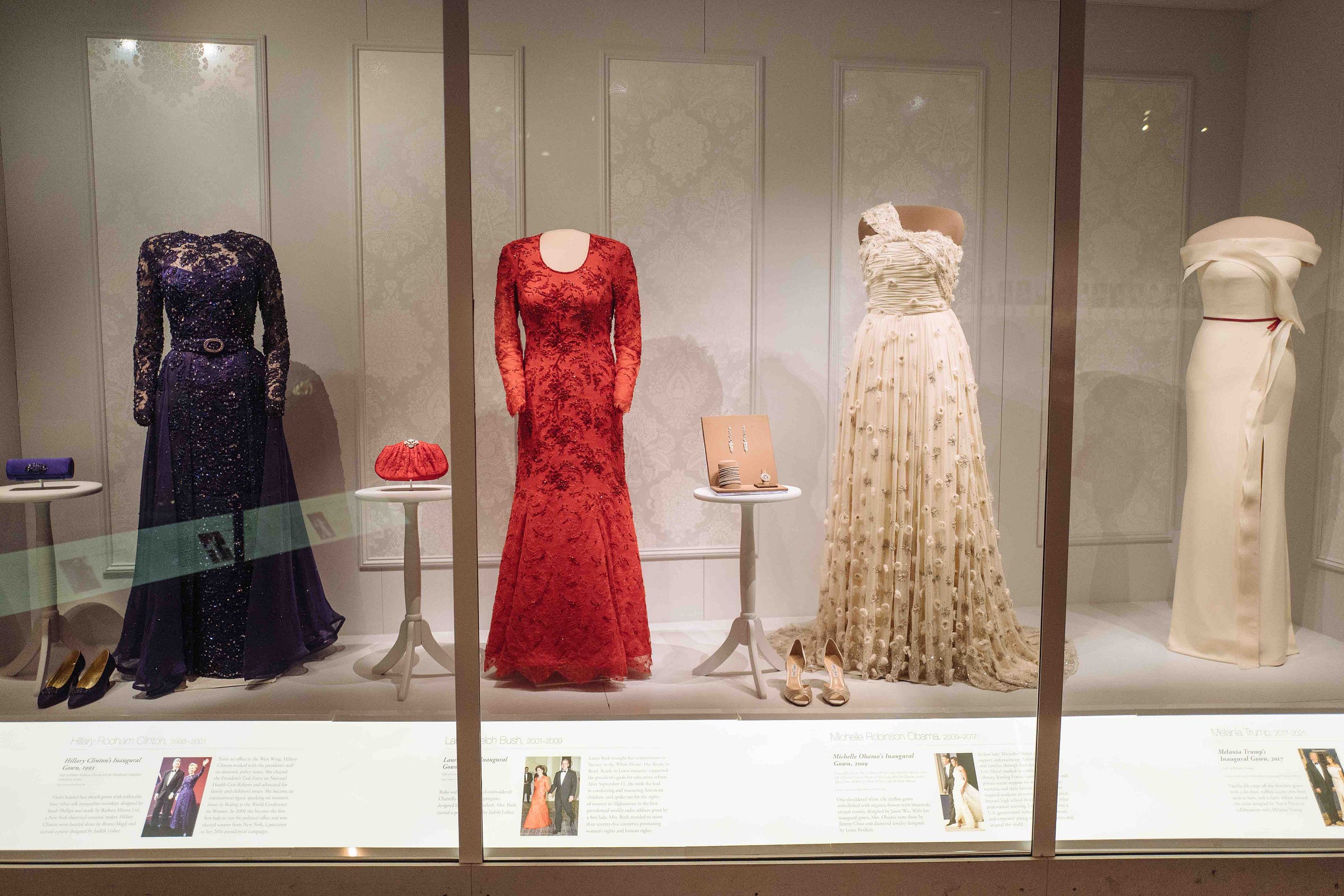
Do designers reference this collection?
A lot of designers study this collection. Laura Bush sent Michael Faircloth. He came to the exhibit to see what color hadn’t been used in a while. He didn’t see any red — and red was his favorite color. And it was a beautiful color on her. He had been trying to get her into more color, so he designed this sparkly red dress, which is absolutely gorgeous. And looks lovely on her.
I’m struck by how soft Michelle Obama’s looks in comparison to the beaded ones that came before it.
It’s a wonderfully soft fabric. It must have felt lovely to wear. On camera and in photographs, it looked as if it were brilliant white. And it’s not. It’s ivory white. People think, well, has something happened? But no, it’s just things look different on camera and in different lighting than they do.

Do you have a favorite inaugural gown?
Oh, that’s like asking your favorite child! There’s so many more that aren’t on view. One that I love is the first inaugural gown that came to the collection as the collection was being formed, and that’s Helen Taft’s. It’s also white. So it was interesting when Michelle Obama donated hers and we had [Taft’s] gown in a case. It was a hundred years apart, white dresses with trains and silver embroidery. It was a total fluke but it was a nice fluke. It’s a beautiful dress.
When they were putting the collection together in 1912, the volunteer curators happened to be at a luncheon or breakfast with Mrs. Taft. And they were trying to interest her: Would you donate something to this new thing we’re doing? And she did. She donated the inaugural gown. And every first lady after that who has had an inaugural ball or inaugural event has donated their dress. So she begins this tradition.
And soon you will add two more dresses to the collection. What do you do with the garments when you receive them?
They go to our incredibly talented conservator, Sunae Park Evans. She does any repair because invariably a thread’s going to be loose, a bead’s going to be, something’s going to happen, even if everything’s in great shape. She checks it over to make sure everything’s fine and then creates each of these mannequins. They start with a form that we purchase and then she builds onto that to support the dress as needed. Each mannequin has been custom altered, made to fit each dress, which helps then support the dresses and keep them stable and safe.
For the masks, our very talented exhibit team made these wonderful little crystal balls, little ball mounts that sort of fade away.

What do you think of the two outfits Dr. Biden wore that day?
They’re both absolutely lovely. I love tweed and velvet together [on the blue look by Alexandra O’Neill]. That, to me, speaks of official-ness but also glamour-official, which is sort of what an inauguration is, isn’t it? It’s a moment of glamour. But also this tried and true traditional ceremony. The blue, as most people saw it that day, will be displayed as the dress and coat together. We’ve even got it buttoned to the two buttons in the photo open as you see it there.
And, of course, the beautiful embroidery on the ivory dress by Gabriela Hearst. I love that it’s embroidered with the flowers of the United States, as a way to show unity, peace, and hope. There’s a patch inside the coat that I would say roughly is above your heart, which is sweet. It’s embroidered with a quote that’s frequently attributed to Benjamin Franklin: “Tell me and I forget, teach me and I remember, involve me and I learn.”
The white pieces [will be displayed on two mannequins] because there’s so much embroidery, which you never got to see that night. You never saw any of it full length. She was on the balcony, so you’re only seeing her from here up [gestures to her waist]. Because of the way the mannequins are positioned, you’ll be able to walk around.
What are you looking forward to about tomorrow’s presentation of Biden’s fashion?
We realize we’re asking the first lady to do something kind of odd, which could be just a little awkward: Stand by a mannequin of yourself in your clothes. But I love seeing the first lady with the mannequins. I love the fact that the first lady is the first person to see what the public will see. Because once we’ve put them on exhibit, we bring her up to see her dress on display. She is the first person to see what the public will see.
I hope that it’s just a joyful experience to become a part of the Smithsonian. You’re part of history! You probably don’t think about it all the time, but you’re a part of history. This is just an amazing, very tangible way of realizing that you’re part of history.
It’s a wonderful day for us. I always hope it’s a wonderful day for her.
My thanks to Lisa Kathleen Graddy! Our time together made me so excited to explore first lady fashion more. If you are in Washington, D.C., I highly recommend stopping by the exhibition. Information on visiting the National Museum of American history can be found here.
ICYMI: My recap of Biden’s inaugural clothing presentation is here.




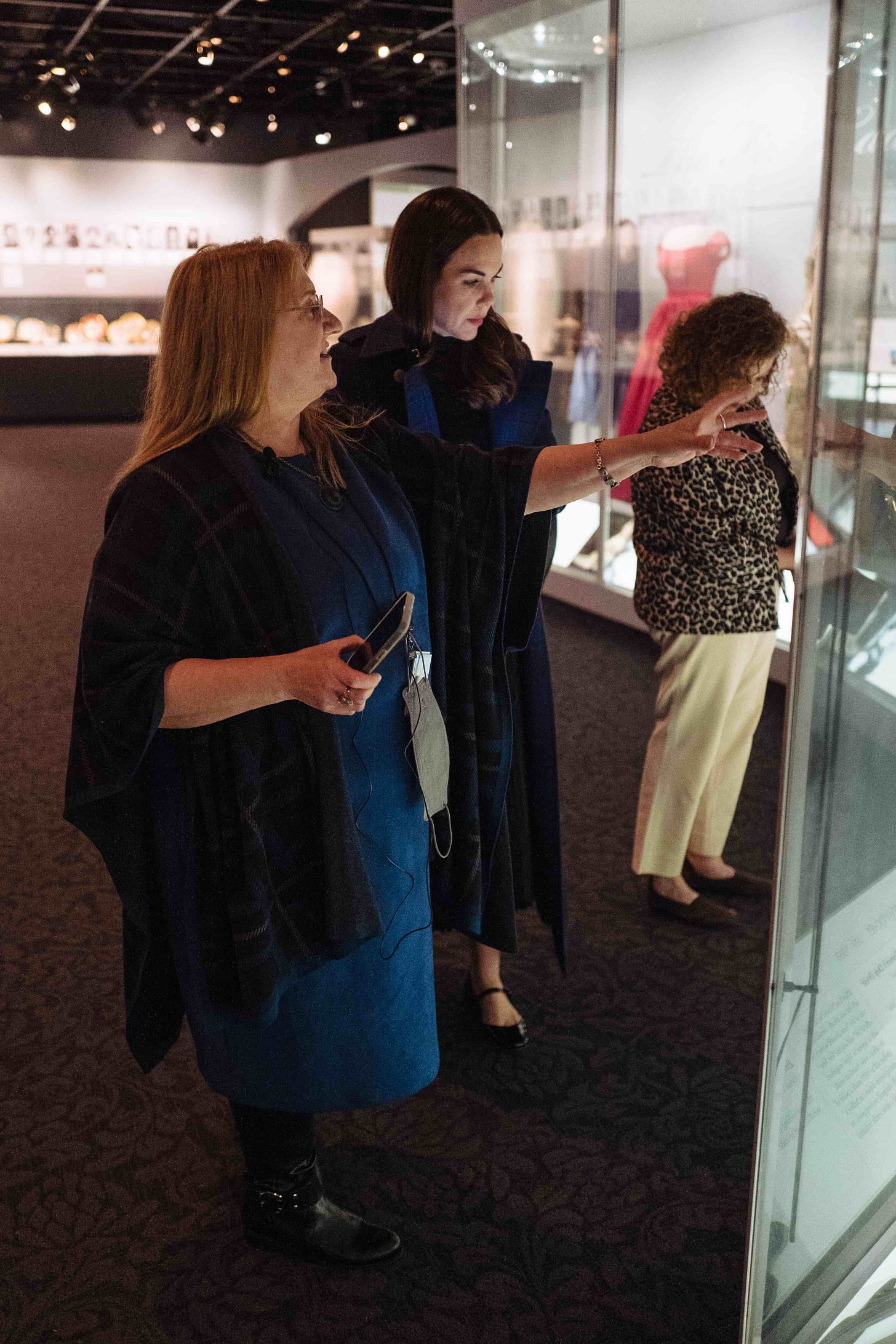

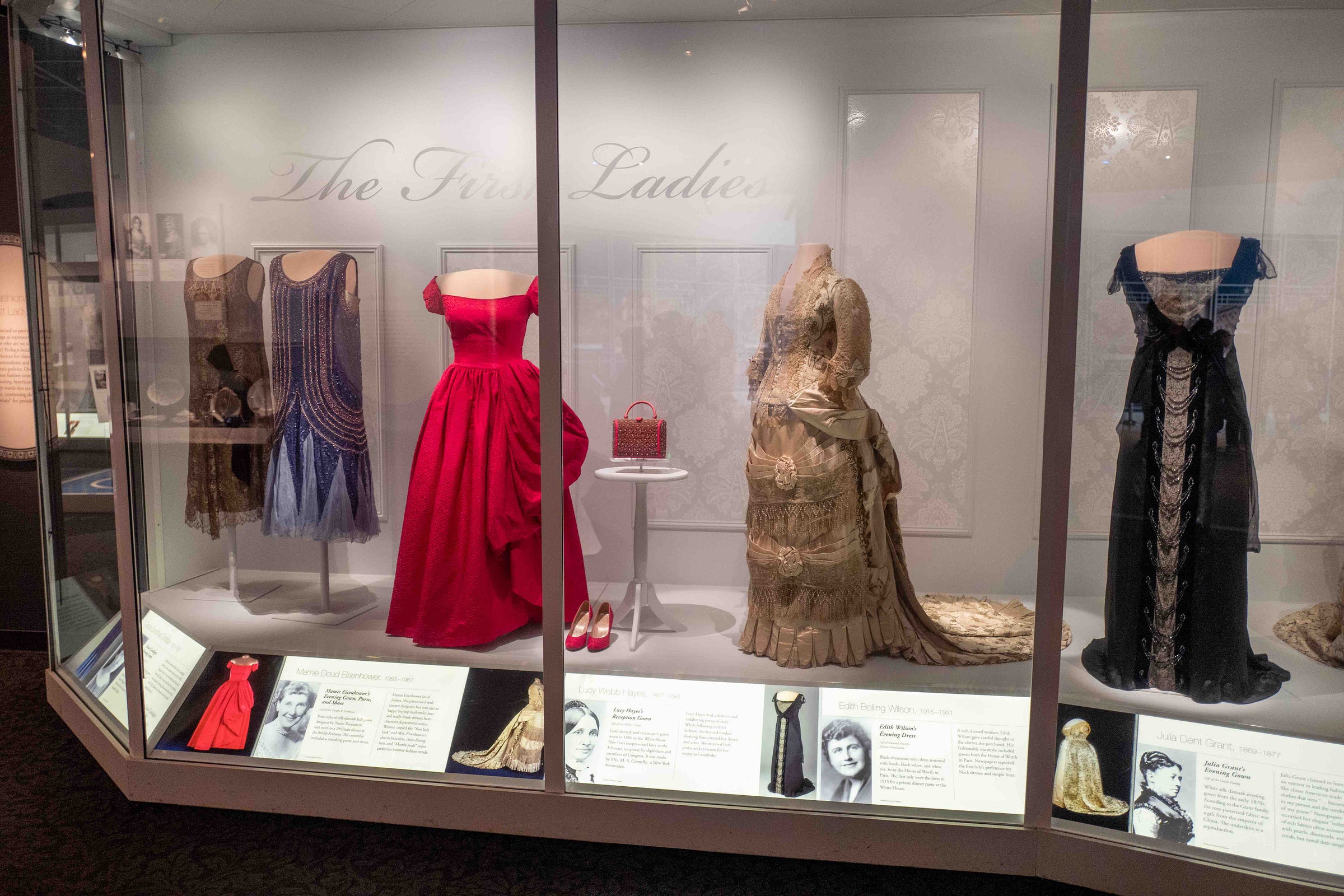
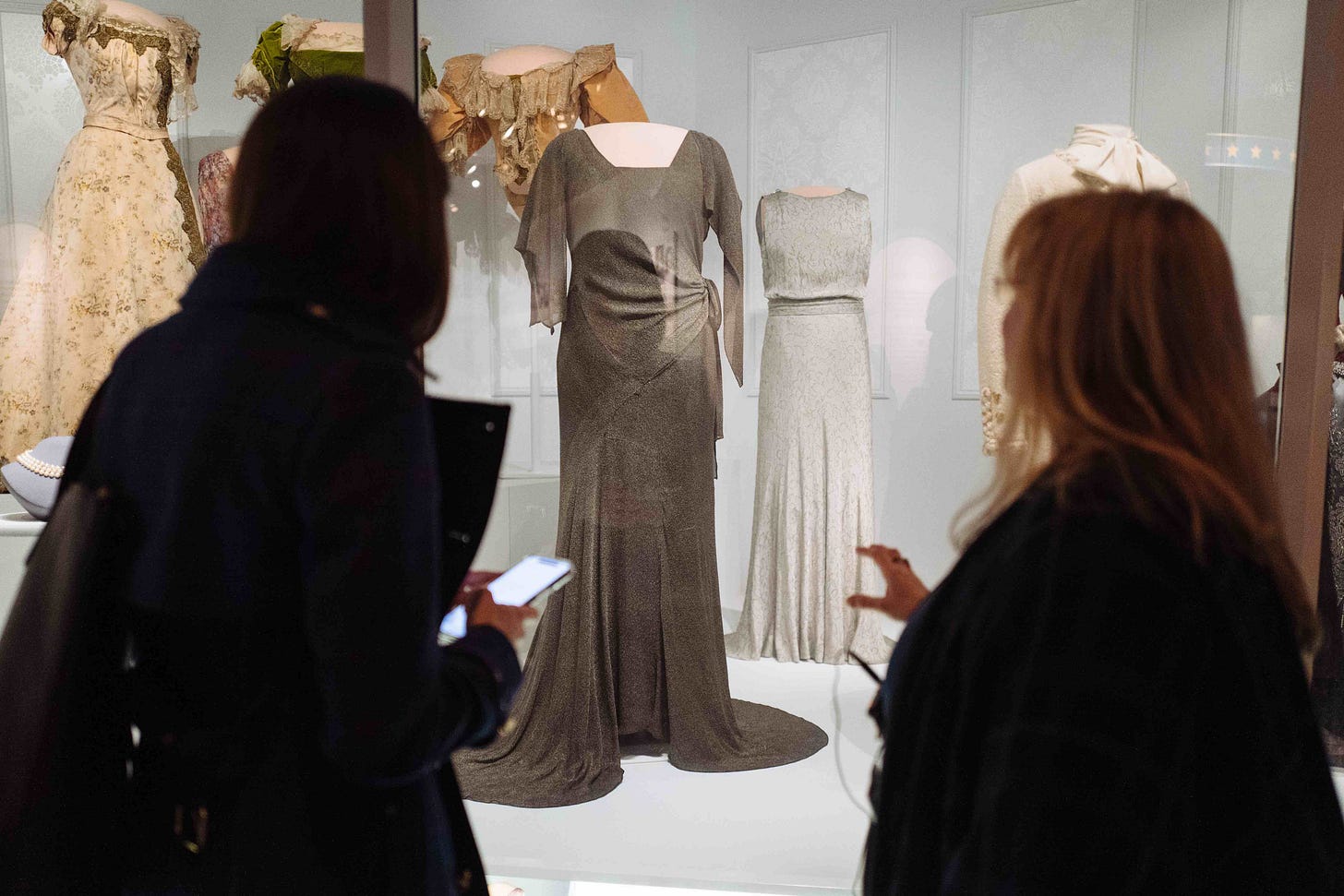
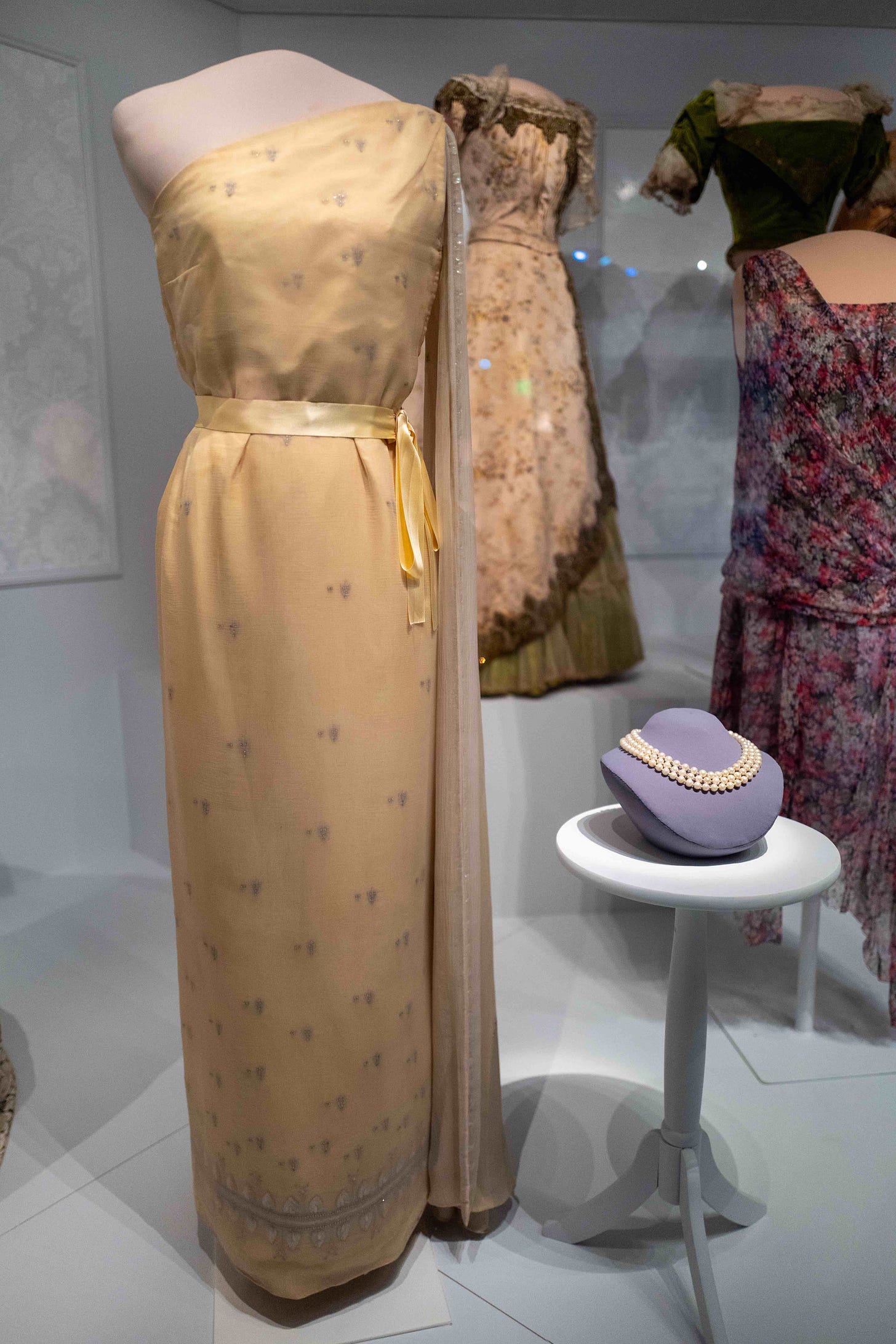


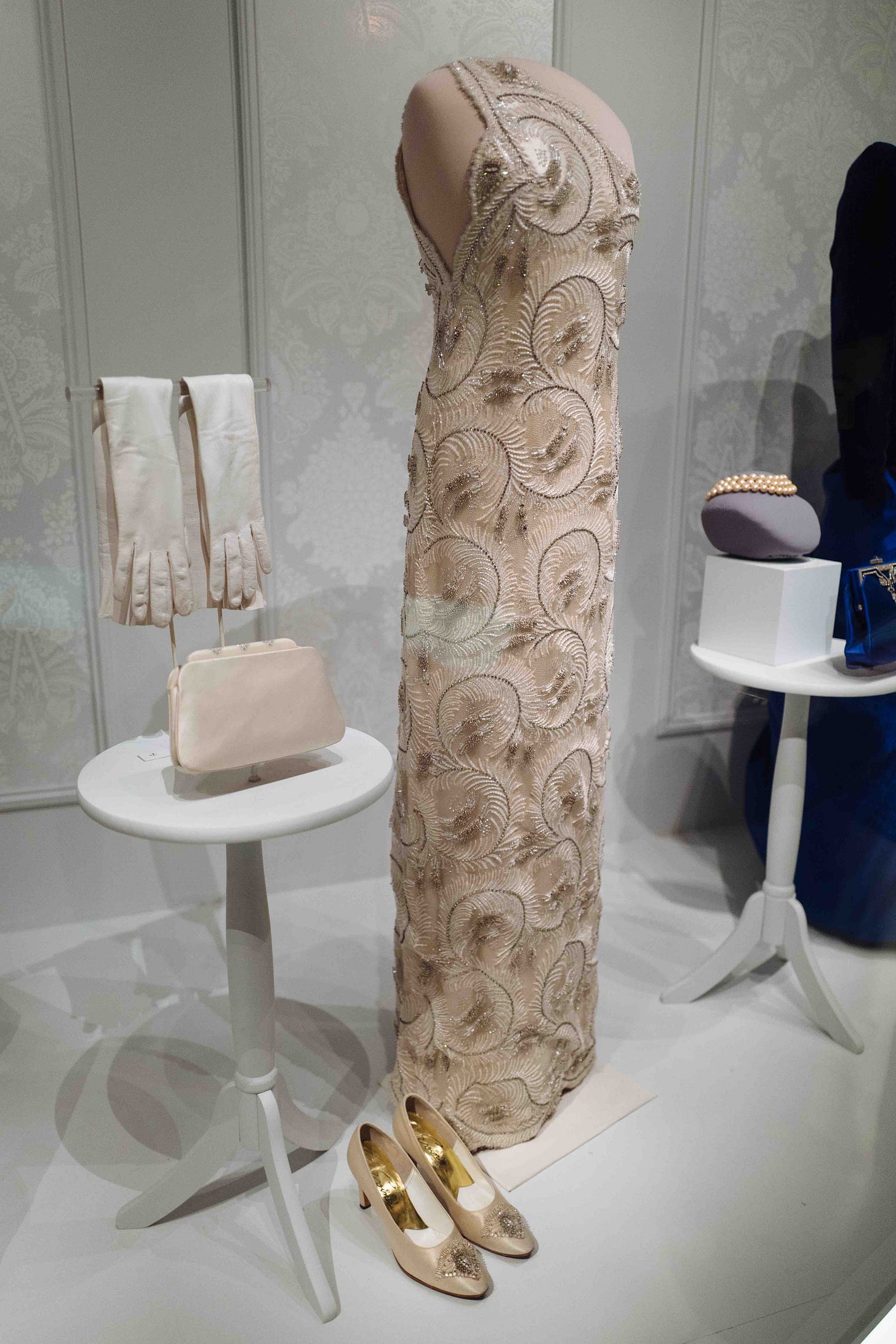
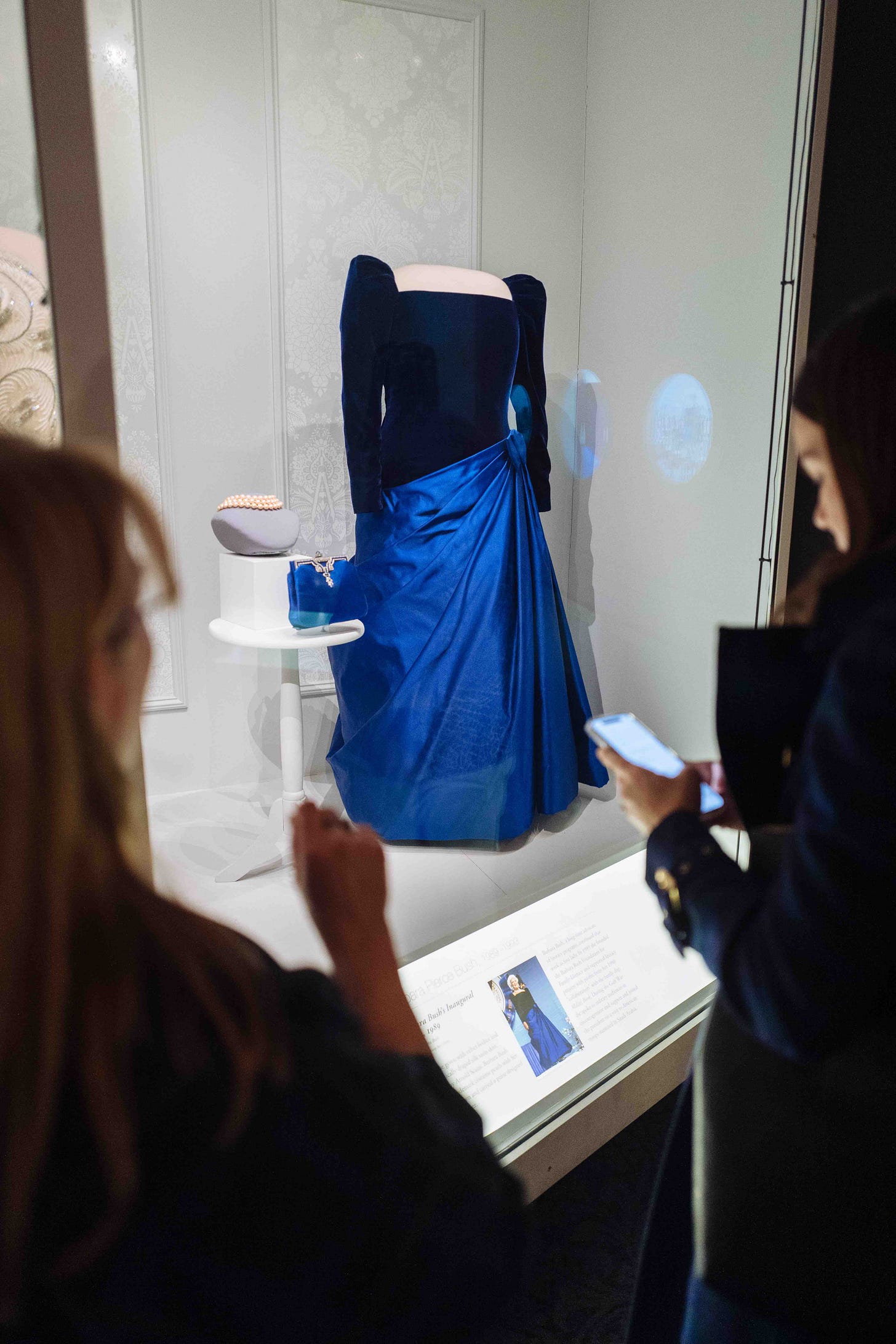
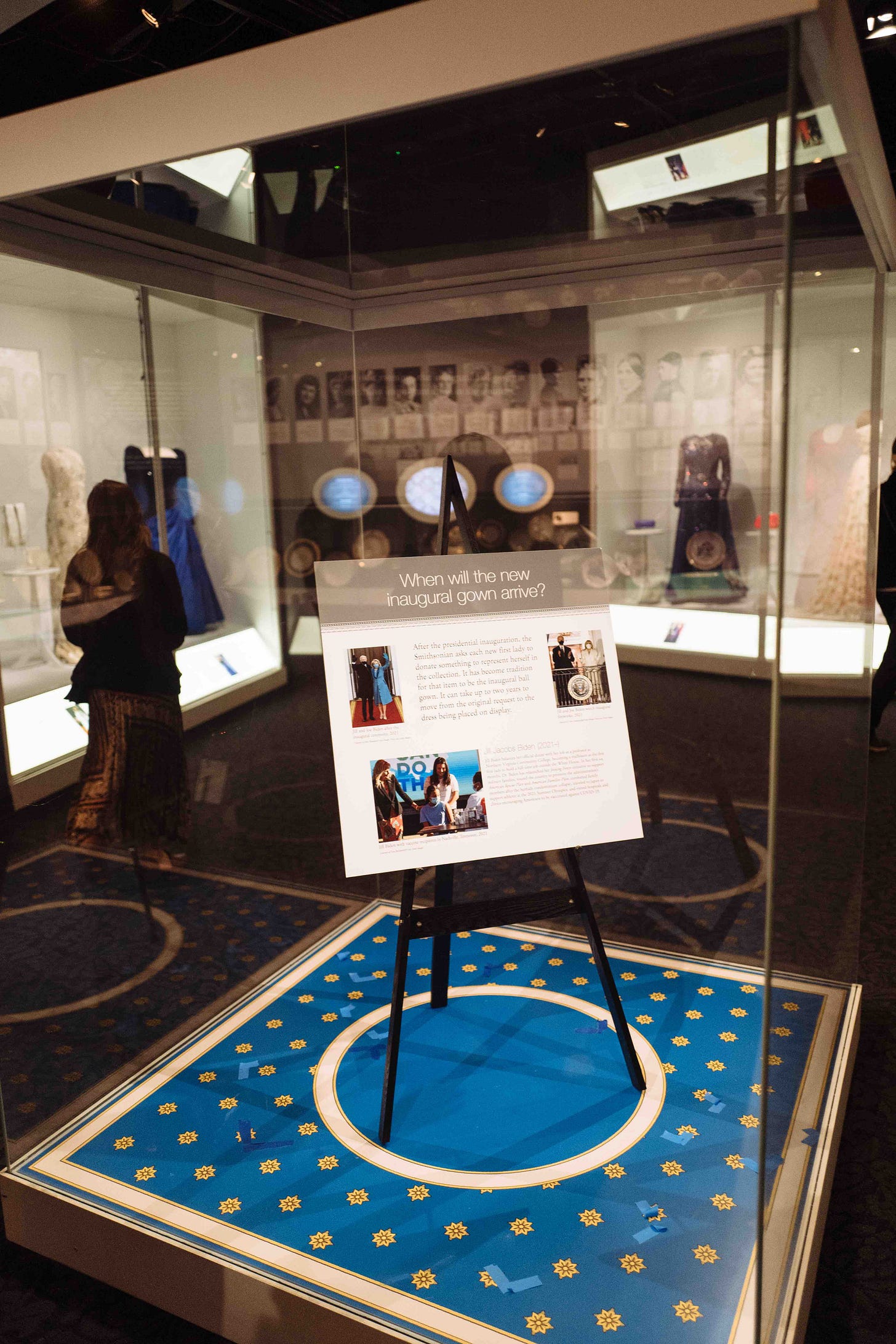
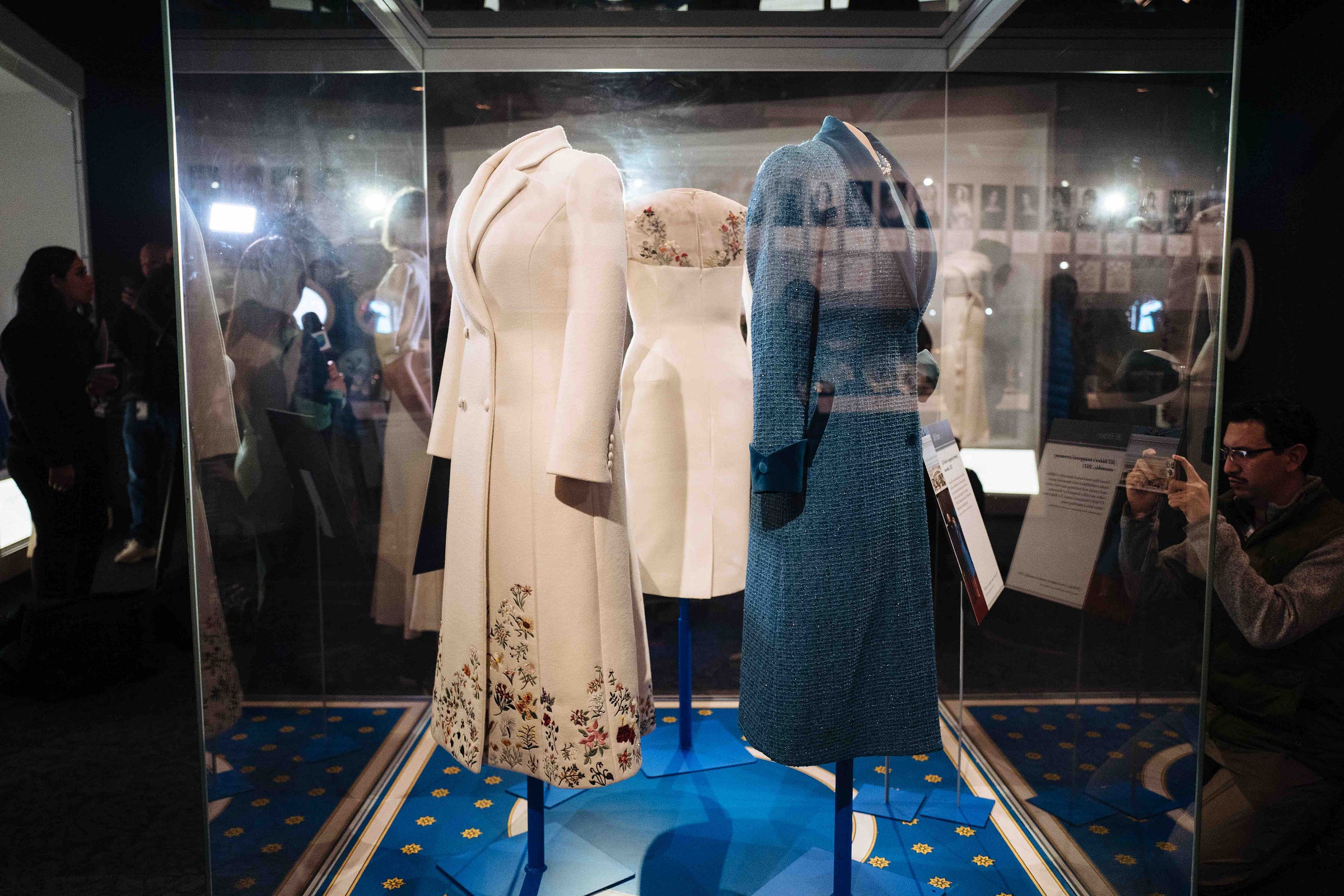
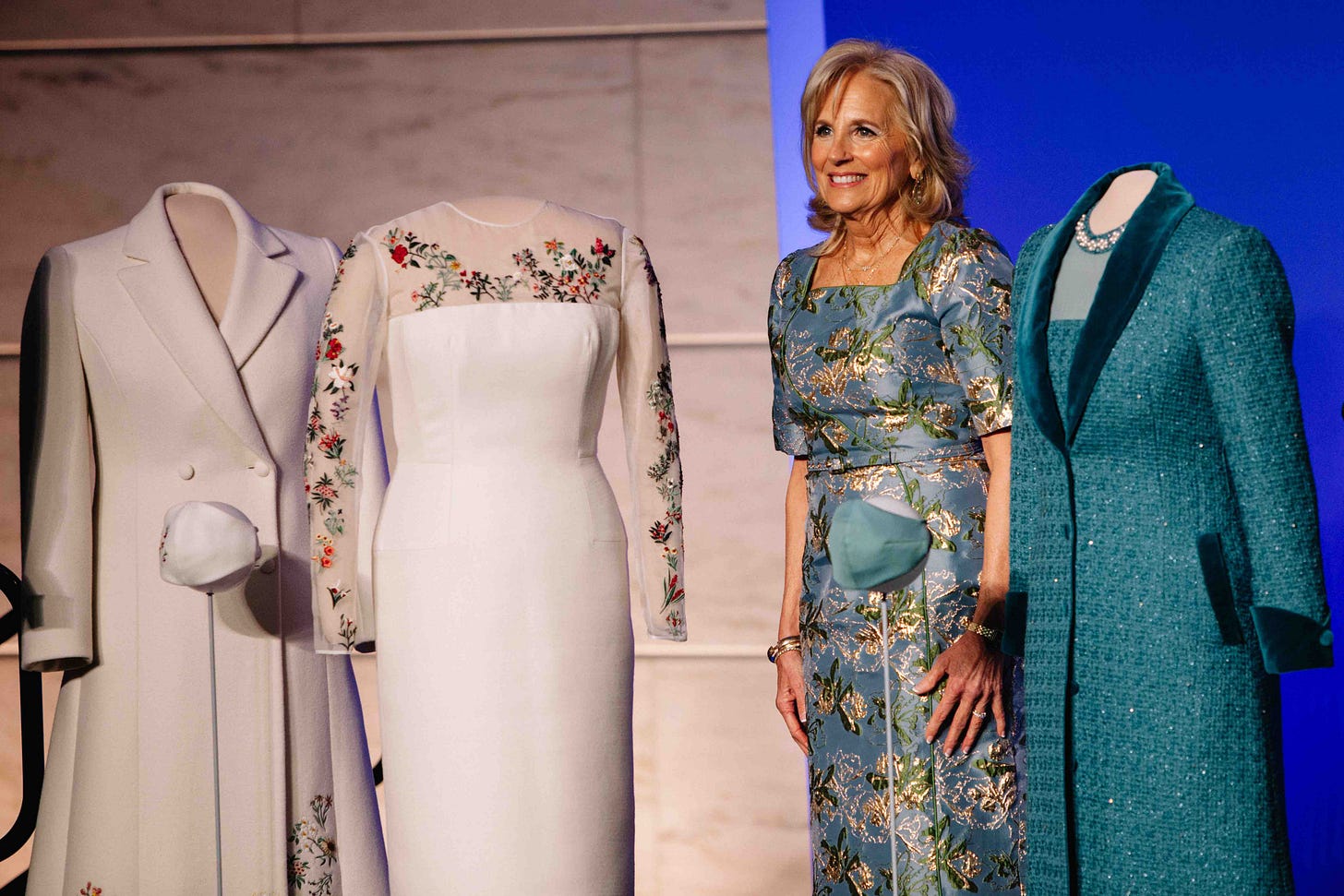

I find it so fascinating that Barbara Bush (a Republican) wore blue! Of course Laura Bush had to wear red. I don't believe for a second that her team chose red because it hadn't been used for a while. There was so much controversy over the 2000 election. We all stared at that map of red states and blue states for MONTHS. The verdict didn't come down on what color Florida was until a few weeks before the inauguration. She chose to wear GOP red.